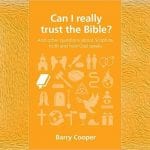There are certain books and sections of the Bible I can’t wait to teach. These stories give us confidence and joy in the gospel, in God’s plan to rescue and redeem people from sin through Jesus. Which ones come to your mind?
Maybe it’s God’s covenant with Abraham, his declaration that this elderly man will have a child, and through that child all nations will be blessed. Perhaps it’s David defeating the giant, Goliath, and the Philistine army along with him, the shepherd king who leads his people into victory over a powerful enemy. Or, jumping ahead, maybe it’s Jesus’s display of power and might as he healed the sick, gave sight to the blind, and made the lame walk.
But for me, one of my favorite portions to teach from is the divided kingdom, one of the darkest times in the history of God’s people.
(Did I mention I serve in children’s ministry at my church?)
Death of the Dream
The chronicle of Israel and Judah’s descent into sin is arguably the bleakest section of the Bible, perhaps more than the exile or even the time of the Judges. In many ways, it’s the antithesis of everything that came before. The books of 1–2 Samuel and the first half of 1 Kings, in many ways, seem to show the consummation of God’s promises to Abraham: the wandering people, former slaves, had made themselves a home in Canaan. They had a mighty king, David, who led them into victory over their enemies. His son Solomon was the wisest and richest man to ever live, and during his reign Israel was a beacon of wisdom and prosperity. Silver was “as common in Jerusalem as stones” (1 Kings 10:27, CSB). Reports of Solomon’s wisdom went out to all the nations, but they didn’t convey even half the story, as flattering as they were (1 Kings 10:6–9). If ever there was a heaven on earth after the fall, Jerusalem in Solomon’s day was it.
But the wise king became a fool. His heart was led astray by his many wives, his great wealth, and his many possessions (1 Kings 10:14–11:43). He worshiped false gods, and the people followed suit. Under his son’s rule, the nation split in two, and both Israel and Judah ran headlong toward destruction.
God warned his people.
He disciplined his people.
But still they would not listen.
And so they were banished into exile—first the northern kingdom of Israel, then the southern kingdom of Judah. The former slaves were slaves once more.
God’s Love in a Living Parable
So why do I love teaching from these passages? Why do I look forward to teaching them to kids? Because this section of Scripture is filled to the brim with gospel hope. The gospel is there, ready to break forth, if we have eyes to see. While there are many examples (and many that the New Testament itself points to), just consider one: Hosea, one of the prophets God sent to Israel.
Hosea’s life was a living parable, one designed to tell the story of the relationship between God and his people through Hosea’s marriage to Gomer. God told Hosea, “Go and marry a woman of promiscuity, and have children of promiscuity, for the land is committing blatant acts of promiscuity by abandoning the LORD” (Hosea 1:2, CSB). In commanding this, we can see the great lengths God went to in order to help his people see the awfulness of their sin. Betraying him and serving false gods is akin to being a brazenly adulterous spouse.
But in it we also see his love for his people. God doesn’t abandon Israel to their sin any more than Hosea abandons Gomer to her promiscuity. Despite her unfaithfulness, Hosea comes to her. He seeks her out. He pleads with her to return. And he even purchases her freedom.
(If you’re wondering how you might actually teach this story to kids, watch this video to see how we do it with The Gospel Project.)
Darkness-Exploding Light
All throughout Hosea, God is pleading with his people to repent, to turn from their sin and run back to him who loves them. Despite their infidelity, he doesn’t abandon them. Instead, he swears he will redeem and restore them (see Hosea 14).
That’s what I want people to see as we study this period in the Bible’s narrative, whether I’m studying on my own, with other adults, or teaching the kids at my church. I need this because I need the gospel, and what is the gospel if not the supreme example of God’s commitment to rescue and redeem people who don’t deserve it?
Think about it: Gomer didn’t deserve Hosea’s love any more than Israel deserved God’s. You and I are just as prone to wander as anyone else—and yet, God doesn’t stop chasing us. He’s unfailing in his resolve to bring about total redemption in Christ, to complete the work he began (Phil. 1:6).
That’s what I love about books like Hosea. This is what I love about these darker stories in Scripture, and why I love to teach them, even to kids.
This article is published in partnership with The Gospel Project. To follow the scarlet thread of redemption through the divided and conquered kingdoms of Israel and Judah, try four sessions of The Gospel Project for all ages at gospelproject.com.
Is there enough evidence for us to believe the Gospels?
 In an age of faith deconstruction and skepticism about the Bible’s authority, it’s common to hear claims that the Gospels are unreliable propaganda. And if the Gospels are shown to be historically unreliable, the whole foundation of Christianity begins to crumble.
In an age of faith deconstruction and skepticism about the Bible’s authority, it’s common to hear claims that the Gospels are unreliable propaganda. And if the Gospels are shown to be historically unreliable, the whole foundation of Christianity begins to crumble.




































